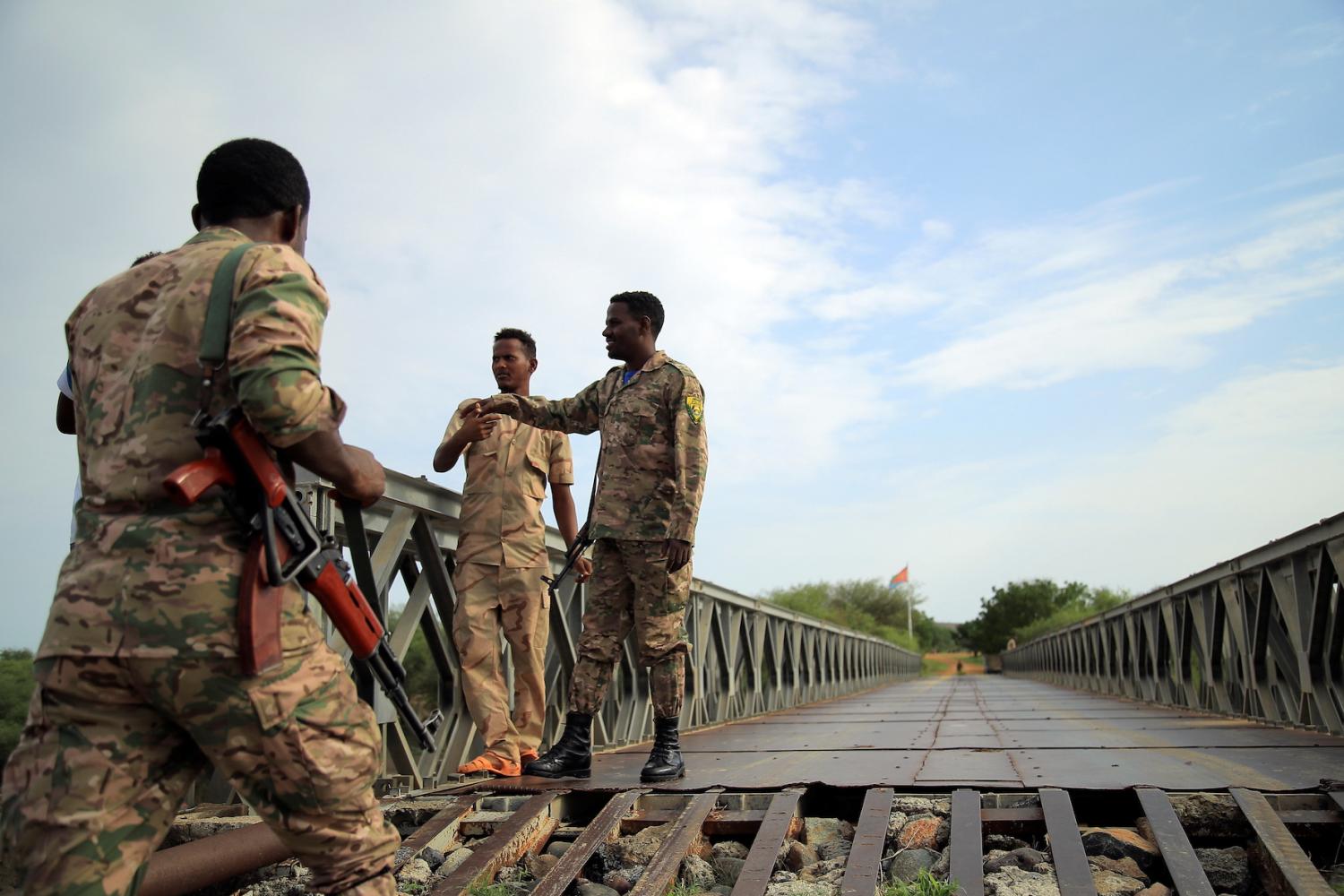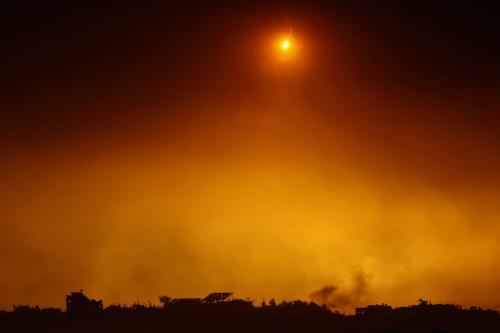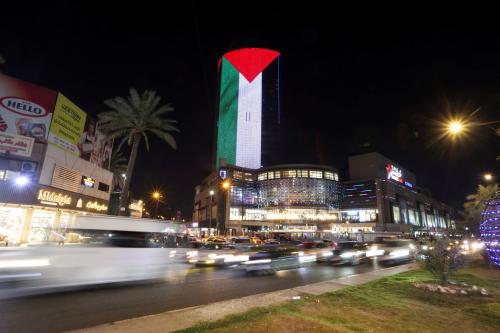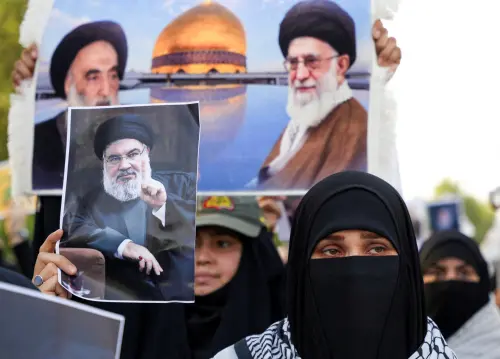This piece is part of a series titled “Nonstate armed actors and illicit economies in 2024” from Brookings’s Initiative on Nonstate Armed Actors.
Hezbollah, the Shia movement created more than forty years ago in Lebanon, is one of the most successful and heavily armed nonstate actors in recent history. With tens of thousands of battle-hardened fighters and backing from Iran, Hezbollah poses a serious threat to Israel. The group has joined the Israel-Hamas war and displaced tens of thousands of Israelis from their homes in the Galilee, in northern Israel. The Houthis, Hezbollah’s ally and understudy in Yemen, have joined the fight and been bombed by the United States and the United Kingdom. There is a growing risk that the conflict will expand further beyond Gaza and the Red Sea into a regional war including Lebanon.
Origins of the “Party of God”
Israel’s invasion of Lebanon in 1982, known as Operation Peace for Galilee, set the stage for Hezbollah’s creation. Intended to destroy the Palestinian resistance movement, Israel’s operation instead bogged the Israel Defense Forces (IDF) in a quagmire. Iran and Syria created Hezbollah to fight the IDF and drive out the American and French troops sent to maintain peace and order in Beirut. Iran continues to have significant influence over Hezbollah’s decisionmaking to this day.
In 1982, Iran’s Islamic Revolutionary Guard Corps sent a detachment to Lebanon to train Shia fighters and provide expertise in terrorism and guerrilla warfare. They were ruthless: throughout the 1980s, they twice blew up the U.S. Embassy, killed hundreds of Marines and French paratroopers, kidnapped Americans, and murdered CIA station chief William Buckley in Beirut. My friend and mentor Robert Ames was killed in the April 1983 suicide bombing of the U.S. Embassy in Beirut.
Hezbollah also expanded its operations outside of the Middle East. In 1992 and 1994, Hezbollah members were involved in suicide bombings in Argentina targeting the Israeli embassy and a Jewish cultural center. The United States has sanctioned members of Hezbollah involved in the bombings.
The mastermind of Hezbollah’s terrorist activities was Imad Mughniyeh. He plotted the attacks on the U.S. Embassy in Beirut and the Marines at Beirut airport as well as the bombings in Buenos Aires. He was killed in Damascus in 2008, reportedly by the Central Intelligence Agency.
Hezbollah also developed and maintains large fundraising operations across the Middle East, Africa, and North and South America, including the tri-border region of Argentina, Brazil, and Paraguay. It is involved in drug trafficking, diamond smuggling, and a variety of legal economies from which it supports its nefarious militant activities.
Hezbollah’s evolution
Over the years, Hezbollah expanded from a terrorist network to a well-organized militia and a political movement that came to dominate Lebanon’s politics. Today, it is the single strongest movement in Lebanon, a remarkable achievement for the long-suppressed and marginalized Shia community. Yet while running an impressive medical support and service distribution machine for its Shia constituents, Hezbollah has acted as a destructive and irresponsible political spoiler at the national level, preventing meaningful accountability and governance progress even as Lebanon remains mired in a catastrophic economic meltdown.
In 2006, Israel and Hezbollah fought an intense war with severe consequences for both Israeli and Lebanese civilians. Over a thousand Lebanese civilians were killed by IDF bombing and 39 Israeli civilians were killed by Hezbollah attacks; a million Lebanese civilians were displaced by the war.
Since then, both sides have been eager to avoid a repetition of full-scale war. There have been frequent firefights along the border, but they have not escalated into a war. In 2022, Lebanon and Israel negotiated a maritime border agreement backed by Hezbollah with U.S. assistance.
In 2011, Hezbollah came to the defense of the Bashar al-Assad regime in Syria together with Iran and Russia. The aid helped Assad hold onto power through the Arab Spring and the Syrian civil war.
The war in Gaza
Hezbollah is eager to show solidarity with Sunni Hamas in its war with Israel that began with a devastating Hamas surprise attack on Israel on October 7, 2023. Subsequently, incidents in the Israel-Lebanon border region have become more frequent. As a consequence, Israel has evacuated thousands of citizens from the border region, including the city of Kiryat Shmona, which has over 20,000 residents.
Hezbollah’s arsenal of missiles and rockets has grown from 15,000 in 2006 to over 130,000 today. Every city and town in Israel is at risk. Beyond enabling Hezbollah and Iran to meddle in various countries of the Middle East, this arsenal is a means to deter Israel from attacking Iran’s nuclear facilities. A military assault on Iran’s nuclear infrastructure will likely spark a massive attack on Israel by both Iran and Hezbollah. This has effectively deterred Israel even as Tehran has accelerated its nuclear program since the Trump administration withdrew from the Joint Comprehensive Plan of Action in 2018.
Chaos in the Red Sea
Today, Hamas and Hezbollah have been joined by the Yemeni Houthis, a Zaydi Shia group, in attacking Israel. The Houthis, Hezbollah, and Hamas all receive financial and materiel support from Iran. Along with pro-Iran Shia militias in Iraq and various actors in Syria, they form Iran’s Axis of Resistance to Israel and the United States. The Houthis have modeled themselves after Hezbollah but had never actually targeted Israel until December 2023, when they launched drones against Israel. Now they are routinely attacking merchant ships in the Red Sea, significantly disrupting shipping at Israeli ports.
The Houthi attacks on shipping in the Red Sea prompted Washington to create a maritime alliance to protect international shipping. On January 11, 2024, the United States and the United Kingdom conducted dozens of military strikes on Houthi targets in Yemen. Oman, Yemen’s neighbor, condemned the attacks and Saudi Arabia has urged restraint because it rightly fears that military operations against the Houthis will spark a breakdown in Yemen’s cease-fire and renewed Houthi strikes on the kingdom after a decade of a bloody war.
For the Houthis, these strikes are only a continuation of U.S. support for the Saudi war that has lasted a decade. They are unlikely to be intimidated by air strikes.
Heightened risks of escalation
Israel has declared it will target Hamas leaders outside of Gaza. On January 2, 2024, an Israeli fighter jet killed several senior Hamas leaders in a southern suburb of Beirut which has long been a Hezbollah stronghold. Hezbollah leader Hasan Nasrallah condemned the attack and vowed that there would be a “response and punishment.” The bombing in Iran on January 3 has added to the atmosphere of worsening conflict in the region.
Hezbollah is playing a careful strategy in the Israel-Hamas war: underscoring its support for Hamas and imposing serious costs on Israel while so far avoiding an all-out war with the latter. The carefully calibrated level of violence is inherently difficult to control and could break down at any moment.
The Biden administration has been urging Israel not to attack Hezbollah and provoke a wider war. Its decision to send Lisa Johnson, a new U.S. ambassador with considerable experience in the region, to Beirut is a positive step, but the administration will need to redouble its efforts to avoid escalation. The war in Gaza must end. A sustainable and comprehensive cease-fire in Gaza, which is currently being pursued by U.S. partners, including Egypt and Qatar, is essential to prevent an outbreak of regional conflict from Beirut to Sana’a. The situation is urgent.
The Brookings Institution is committed to quality, independence, and impact.
We are supported by a diverse array of funders. In line with our values and policies, each Brookings publication represents the sole views of its author(s).








Commentary
Hezbollah and the Axis of Resistance in 2024
January 16, 2024